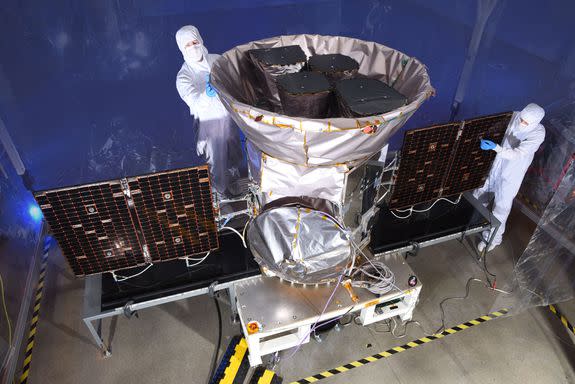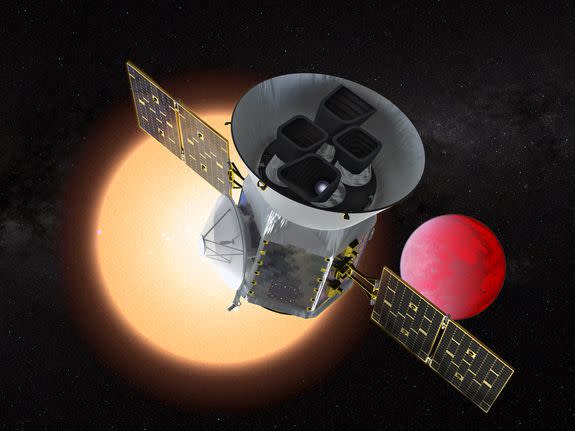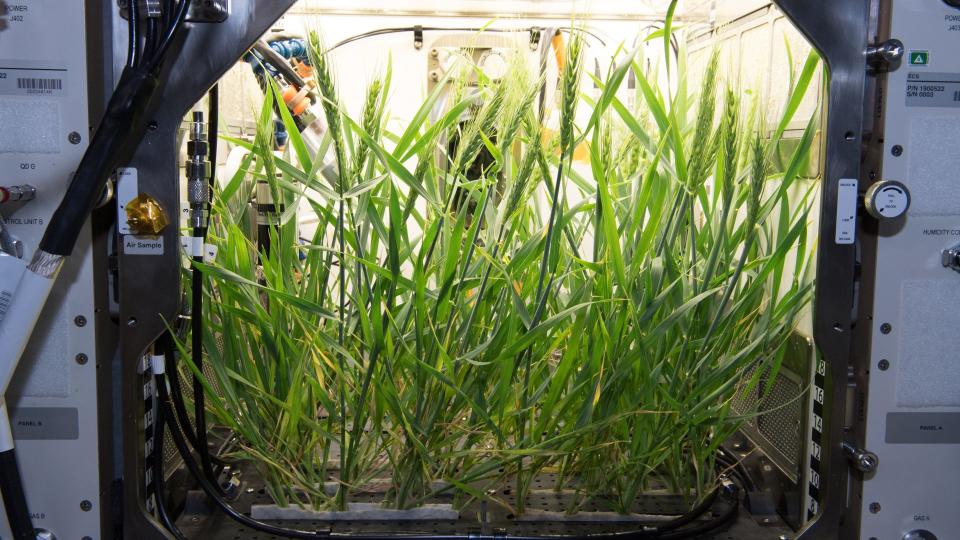Here's how NASA's TESS will hunt for alien planets

Billions and billions of worlds lurk beyond our solar system. But most of the time, we can't see them.
Alien planets large and small are usually drowned out by the light of their own stars when we try to spot them from Earth.
However, NASA's TESS — short for Transiting Exoplanet Survey Satellite — is expected to change that after it launches to orbit on Monday.
SEE ALSO: NASA's TESS is going to be your new favorite space mission
The satellite is designed to seek out alien worlds circling far-off stars and reveal them to scientists on the ground.
“TESS is kind of like a scout,” TESS scientist Natalia Guerrero said in a statement.

Image: nasa
“We’re on this scenic tour of the whole sky, and in some ways we have no idea what we will see. It’s like we’re making a treasure map: Here are all these cool things. Now, go after them.”
So, how will TESS perform its alien planet hunt?
TESS will survey the sky, looking for small dips in a distant star's light as a planet passes between the satellite and its star.
Even a small planet will block out at least a little bit of a star's light as it transits, and TESS should be able to see it when it does.
It'll take TESS about two years to survey around 85 percent of the sky, looking out at a field that includes more than 20 million stars, according to MIT.
TESS's four cameras will keep an eye out for transiting planets; scientists expect that thousands of stars should have those detectable worlds orbiting them, MIT added in the statement.
In total, TESS researchers hope that the refrigerator-sized satellite will be able to detect about 50 planets that might be similar in size to our Earth.
The satellite's cameras will look at one part of the sky and take photos of it, searching for planets transiting their stars. TESS is expected to take photos of the stars every 2 minutes — hopefully long enough to catch a planet transiting one of them, MIT said.
TESS will also take wide-field photos of a large portion of the sky every 30 minutes.
“With the two-minute pictures, you can get a movie-like image of what the starlight is doing as the planet is crossing in front of its host star,” Guerrero said.
“For the 30-minute images, people are excited about maybe seeing supernovae, asteroids, or counterparts to gravitational waves. We have no idea what we’re going to see at that timescale.”
TESS could even help us find our first truly Earth-like planet in the habitable zone of its star.
The satellite will keep an eye out for potentially habitable worlds circling stars that are somewhat smaller and dimmer than our own sun.
“There’s no science that will tell us life is out there right now, except that small rocky planets appear to be incredibly common,” MIT exoplanet hunter Sara Seager said. “They appear to be everywhere we look. So it’s got to be there somewhere.”
Perhaps the best part about all of these planets TESS is expected to detect is how close they are to us.
The satellite will look at stars that are only about 300 light-years away, potentially paving the way for follow-up observations of whatever planets might be found around those stars.
Ground-based telescopes and even the James Webb Space Telescope — expected to launch in 2020 — might be able to detect the atmospheres of exoplanets found by TESS when they do additional observations of those worlds.

Image: NASA
This isn't the first time scientists will have used the transit method to find new exoplanets.
NASA's Kepler Space Telescope has been detecting planets via the transit method for years. The eye on the sky has found 2,600 confirmed alien worlds.
That said, TESS will help fill in the gaps left by the Kepler.
While the Kepler was able to survey a very specific part of the sky for exoplanets, finding worlds of many sizes, TESS will help researchers find more planets that are around the same size as Earth, helping scientists along in the search for a world out there in the universe like our own.
However, don't expect us to find another Earth overnight.
"Planet-hunting for habitable worlds is a generations long endeavor," Seager said in an interview.
"Please be patient with us. Or, in this case, patience is a virtue!"
WATCH: This is how wheat is growing in microgravity


